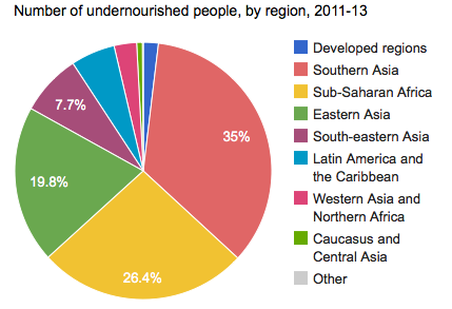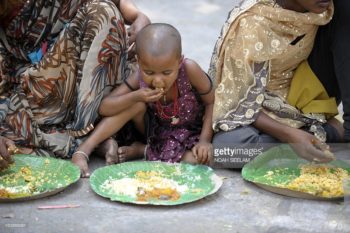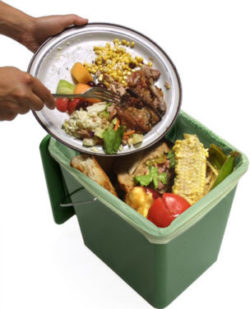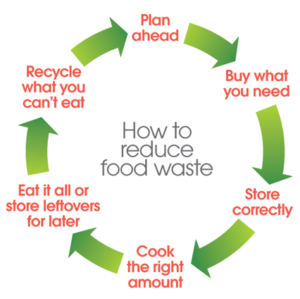“Control oil and you control nations; control food and you control the people.” ~ Henry Kissinger, Ph.D.
Malnutrition has been described as lack of proper nutrition, caused by not having enough to eat, not eating enough of the right things, or being unable to fully digest the food you eat
Two billion people in the world suffer from various forms of malnutrition. Malnutrition is an underlying cause of death of 2.6 million children each year, a third of child deaths globally. One in four of the world’s children are stunted and in developing countries this is as high as one in three. This means their bodies fail to develop fully as a result of malnutrition. Under-nutrition accounts for 11 per cent of the global burden of disease and is considered the number one risk to health worldwide. The strategy to control people by controlling the food supply, first through the conversion from many small farms to fewer, gigantic farming operations and associated price fixing schemes, and later through the creation of genetically engineered seeds, effectively destroyed family farming which kept communities fed. Today, 95 % of all grain reserves in the world are controlled by just six multinational agribusinesses. Along with the destruction of family farms a tremendous amount of diversity has been lost, both in terms of the types of foods grown and the flora and fauna existing in the areas surrounding the farms. 
Child hunger is a very significant issue today. World Hunger defines hunger as protein-energy malnutrition, or a lack of calories and protein. UNICEF estimates state that nearly 195 million children are malnourished worldwide. Here are 10 facts about the experiences of malnutrition in children:
1. Malnutrition can begin as early as conception. If a mother does not receive proper nutrition during pregnancy, her child will already be at risk of developmental problems. This means that early intervention is crucial.
2. Children have a two-year period, beginning at conception and continuing into infancy, known as the “window of opportunity.” During this time, a child can be guarded against the most devastating effects of malnutrition.
3. Malnutrition presents itself in three ways: stunting (shorter-than-average height), wasting (having a low weight for one’s height) and being underweight (having a low weight for one’s age.)
4. A malnourished child can suffer neurological damage. Brain damage is one of many health issues caused by malnutrition, and it can lower IQ, even resulting in mental retardation for some children.
5. Children are affected in more areas than their brains, their immune systems are at risk, too. Children who are malnourished are more likely to die from common childhood ailments, like diarrhoea and respiratory illnesses.
6. Malnutrition is more than just a lack of food. It’s a lack of nutrients. Malnourished children often suffer from vitamin and mineral deficiencies, which have the most negative effects on their health. Recall that children suffering from hunger can develop brain damage. This is due in part to iron deficiency; so is the decreased ability to fight off common infections.
7. Child hunger kills in colossal numbers. It contributes one-third of the 8 million deaths each year of children younger than 5 years old.
8. The main cause of child malnutrition is poverty. Conversely, hunger contributes to poverty, creating a vicious cycle. Another factor contributing to malnutrition is conflict: years of civil war in Libya have put parents in a difficult position without access to food for their families. Natural disasters, particularly droughts and floods, are also contributors to child malnutrition.
9. North Korea had the highest percentage of children under 5 years old who were underweight between the years of 1995 and 2000, and 60 percent of children under 5 were underweight during this time.
10. More than half of the world’s underweight children lived in southern Asia.
Unfortunately, many of today’s food aid programs are not targeting malnutrition. The programs are relying heavily on a corn-soy cereal blend that simply does not contain the required nutrients to keep children from becoming malnourished. Evidence also shows that most corn consumed today is genetically modified and soy is a very dangerous hormone disruptor which can potentially effeminate young boys and can cause the early onset of menstruation in young girls, so instead of seeing their first period at about age thirteen it is occurring as young as eight years. Child hunger kills in colossal numbers and contributes to about one-third of the 8 million deaths of children worldwide.
The causes of malnutrition might seem straightforward, too little food or a diet lacking in nutrients. In reality, though, malnutrition is often caused by a combination of physical, social and psychological issues. For example: Older adults often have health problems, such as dementia or dental issues that can lead to decreased appetite or trouble eating. Other factors that might play a role include a chronic illness, use of certain medications, difficulty swallowing or absorbing nutrients, a recent hospitalization, or a diminished sense of taste or smell.
Dietary restrictions such as limits on salt, fat, protein or sugar can help manage certain medical conditions, but might also contribute to inadequate eating. Some older adults might have trouble affording groceries, others, who eat alone, might not enjoy meals as before, causing them to lose interest in cooking and eating. Grief, loneliness, failing health, lack of mobility and other factors might contribute to depression, causing loss of appetite. Too much alcohol can interfere with the digestion and absorption of nutrients and. nutrients might also be lacking if alcohol is substituted for meals. Almost half of children in low and middle-income countries, 47% of under-fives are affected by anaemia, impairing cognitive and physical development. Iron is a key component of micronutrient blends which are used in large-scale and targeted fortification programs.
Iodine deficiency is the greatest single cause of mental retardation and brain damage. It can easily be prevented by adding bananas, seaweed (kelp), dried prunes, natural yoghurt, Himalayan salt, tamarind, free range eggs and navy beans to your diet. Vitamin A deficiency causes early childhood blindness and increases the severity of infections and anaemia. It affects an estimated 190 million pre-school aged children, and 19 million pregnant and breastfeeding women globally. Natural sources of vitamin A are sweet potato, red bell peppers, butternut squash, dark leafy greens, dried apricots, broccoli, peas, kale, paprika, dried marjoram, cod liver oil, carrots, peas, mango and lettuce (cos and romaine) Zinc deficiency affects children’s health and physical growth; it is also essential for mothers during pregnancy. It is estimated to cause 4% of deaths in pre-school aged children in lower-income countries. Zinc can be found in oysters, beef and lamb, pumpkin and squash seeds, cocoa, cashew nuts and chickpeas.
Never before have affluent nations had so many malnourished yet obese people, a paradox rooted in a poor and toxic diet, churned out by industrial crop growers, concentrated animal feeding operations and fish farms. All of this, and more, has occurred under the guise of improving food availability and safety. Yet all of these “improvements” have led to nothing but corruption, destruction and disease and represent a private agenda hiding behind public statements. Worst of all, these corporations have become so wealthy and as a result politically powerful, that in order to really affect change, we must do it from the ground up, by altering our daily shopping habits. Chemical mono-cropping, the repeated growing of a single crop on a vast amount of land using chemical additives like fertilizers and pesticides, prematurely denatures the soil, promotes “super pests” and “super weeds,” and destroys diversity of both plants and insects in the wild, not to mention curtail food choices at your local grocery store. Agriculture is now one of the worst polluters of all industries, contaminating not only soil, but air and water as well.
Hunger is also a cause of poverty and poverty is a cause of hunger, (Catch 22). By causing poor health, small body size, low levels of energy, and reductions in mental functioning, hunger can lead to even greater poverty by reducing people’s ability to work and learn, thus leading to even greater hunger. A large world population does make it more difficult to provide a decent standard of living for all but when you consider the amount of food that is wasted each year you begin to realise that the problem is not simply one of overpopulation as many eugenicists believe. Issues such as storage, distribution, wastage, demographics, politics, economics, pesticides and control of the food supply for nefarious reasons have to be taken into account.
Malnutrition in older adults can lead to various health concerns, including:
• A weak immune system, which increases the risk of infections
• Poor wound healing
• Muscle weakness, which can lead to falls and fractures
In addition, malnutrition can lead to further disinterest in eating or lack of appetite — which only makes the problem worse.
The causes of malnutrition might seem straightforward, too little food or a diet lacking in nutrients. In reality, though, malnutrition is often caused by a combination of physical, social and psychological issues. Even small dietary changes can make a big difference in an older adult’s health and well-being. If your loved one is losing weight, work with his or her doctor to identify and address all contributary factors. This might include changing medications that affect appetite, suspending any diet restrictions until your loved one is eating more effectively, and working with a dentist to treat oral pain or chewing problems. Request screenings for nutrition problems during routine office visits, and ask about nutritional supplements. Encourage your loved one to eat foods packed with nutrients. Spread peanut or other nut butters on toast and crackers, fresh fruits, and raw vegetables. Sprinkle finely chopped nuts or wheat germ on yogurt, fruit and cereal.. Add cheese to sandwiches, vegetables, soups, rice and noodles.
• Make a restricted diet more appealing by using lemon juice, herbs and spices. If loss of taste and smell is a problem, experiment with seasonings and recipes.
• Plan between-meal snacks. A piece of fruit or cheese, a spoonful of peanut butter, or a fruit smoothie can provide nutrients and calories.
• Drop by during mealtime or invite your loved one to your home for occasional meals. Encourage your loved one to join programs where he or she can eat with others.
• Encourage regular physical activity. Daily exercise, even if it’s light can stimulate appetite and strengthen bones and muscles.
• If your loved one shops for groceries, encourage him or her to bring a shopping list, check store fliers for sales and choose less expensive brands. Suggest splitting the cost of bulk goods or meals with a friend or neighbour, and frequenting restaurants that offer discounts for older adults.
• . If necessary, hire a home health aide to shop for groceries or prepare meals. Also consider Meals on Wheels and other community services, including home visits from nurses and registered dietitians.
• Remember, identifying and treating nutrition issues early can promote good health, independence and increased longevity. Take steps now to ensure your loved one’s nutrition.
Britain has the highest level of food wastage in the European Union, with each household binning 13lb of food a week.
A new study has revealed the EU wastes an estimated 22m tonnes of food each year and almost all of it is avoidable. Vegetables, fruits and cereals are thrown out the most due to their short shelf life, but meat is also often wasted. “In some ways it’s good that this waste is ‘avoidable’, because it means we’re able to do something about it,” said lead researcher Davy Vanham, from the European Commission’s Joint Research Centre. “A lot of food is still ‘good’ but is thrown away when it passes its sell-by date and we’ve noticed that there is less food waste as the population tends to have less money,” Researchers are calling for greater education, arguing that lowering wastage levels will save households money and reduce the impact on the environment. Overly strict sell-by dates and middle class over-ordering both contributed to food waste. As much as half of all food produced in the world gets thrown away, amounting to more than 2bn tonnes of waste each year.
So far we have focused on the physical aspect of malnutrition but perhaps we should take even a brief look at other aspects of this plague. The human body should be regarded holistically, (mind, body and spirit) and not as a collection of separate parts. When we do this we can then see different aspects to malnutrition e.g. moral and spiritual malnutrition. The same way the physical body (temple) needs proper nutrition to be in a healthy state, so the mind and spirit need healthy nutrition, albeit of a different kind, to fortify them against non-physical viruses that seek to destroy them.
We are living at a time when society appears to have adopted a motto of “anything goes.” This can sometimes be seen quite overtly in peoples’ lifestyles and general conduct, where behaviour and attitudes lack any degree of morality and decency. The behaviour of some individuals and societies have reached such a state of decadence that we can justly classify them as “morally malnourished”. This mal-nourishment cuts across all strata of a society and does so to such an extent, that those who are elected to lead and should be doing so by example, are some of the worst offenders and are getting away with it. A few recent cases come to mind. Recently we have had the Canadian Supreme Court say that bestiality was legal as long as there was no “penetration”. This related to a citizen who allegedly put peanut butter on his step daughters’ private parts and allowed his dog to lick it off. We have schools in a German district, teaching primary school children about oral and anal sex. There are factories churning out sex dolls representing children of three and five years old for use by paedophiles with the warped thinking that this will reduce paedophilia. These examples of moral mal-nourishment are only the tip of a very large iceberg. Lack of moral and spiritual nourishment can only have a degenerative effect on adults and children and perpetuate the spiral of ethical decline which in time will be considered the norm.
So in focusing on mal-nourishment let us consider ALL aspects and address them accordingly.
Disclaimer: The contents of this website are not intended to replace a one to one relationship with your health practitioner nor are they meant as medical advice. You are encouraged to do your own research and make your own decisions in partnership with your medical practitioner.
